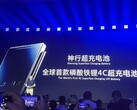SK On is a company specializing in the development and manufacturing of EV batteries, and it’s currently developing two prototypes of new solid-state batteries. These are intended to be more durable compared to current battery technologies. A first factory, where these new batteries will be tested, is being built in cooperation with Solid Power and could be completed by the second half of 2025.
New EV batteries planned for 2028 and 2030
The batteries currently found in electric cars, such as the new Mercedes-Benz CLA, typically last for 1,000 to 100,000 charging cycles before they start losing performance. A research team at SK On has now reportedly tripled that lifespan.
In order to achieve this, the scientists tried to remove the protective layer of the lithium-metal anode by immersing it in a solution consisting of lithium nitrate and other substances. However, this resulted in the formation of a new protective layer.
Thanks to the lithium oxide, this new layer is stronger and therefore increases the lifespan of lithium-metal batteries. The company has published these findings in the ACS Energy Letters journal (via Chosun Biz).
Plastic increases battery longevity
Furthermore, SK On and Yonsei University investigated the relationship between the lifespan and thermal stability of gel polymer electrolytes in polymer solid-state batteries. The scientists determined that a long thermal curing time for the cathode protective layer results in a low discharge capacity.
To determine this, they cured the protective layer of two batteries for different periods of time. Over the observation period, the battery that was cured for 20 minutes had a 34% lower capacity, while the battery that was cured for 60 minutes only lost 9.1%.
Source(s)
Image: Pixabay / Kaboompics












